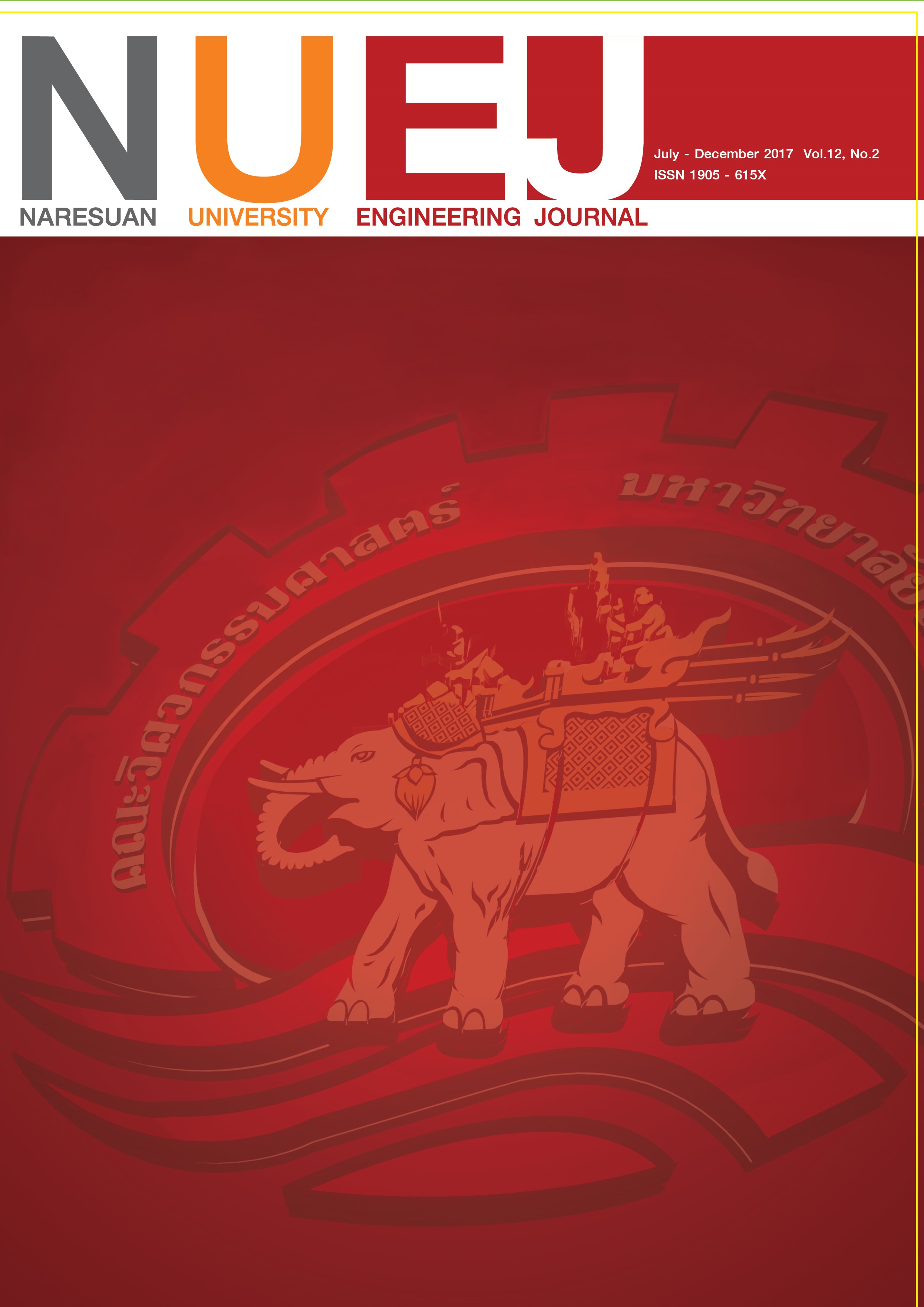การคาดการณ์วันฝนตกเพื่อประเมินความล่าช้าของแผนงานก่อสร้างทาง Forecasting of Raining Day Effecting Delay of Road Construction
Main Article Content
Abstract
This research present a methodology for forecasting how rainy weather can delay road construction projects, The final result provided by this method is a table showing the probable number of non-working days based on the particular project’s start and end date. Examples of these results are presented for three case studies in Phitsanulok City. Historical data on precipitation from the past sixty-three years were collected from the surrounding rain gauge stations and was analysed by using statistical techniques. The Semiparametric Weather Generator was used as a tool for modeling, and generating probable number of non-working days, then were applied into a probable number of non-working days table for the three case studies. The project duration according to the baseline schedule, the actual schedule incorporating actual rainy days, and the expected schedule incorporating probable number of non-working days were compared. The results showed that the methodology for forecasting rainy days by using the probable number of non-working days table based on the particular project’s start and end date can be used to forecast delays in road construction projects, with a ± 2 day of Mean Absolute Error, and 6.37 percent of Bias Error consideration.
Article Details
References
พงศกร จุลละโพธิ. (2551). สาเหตุความล่าช้าในงานก่อสร้างทางหลวงของประเทศไทย. วิทยานิพนธ์ วศ.ม., มหาวิทยาลัยเทคโนโลยีพระจอมเกล้าธนบุรี, กรุงเทพฯ.
จิรัฏฐ์เกียรติ ศิริชื่นวิจิตร, และคณะ. (2552). ปัจจัยที่ทำให้เกิดความล่าช้าในโครงการก่อสร้างทางของแขวงการทางกำแพงเพชร. การศึกษาค้นคว้าด้วยตนเอง วศ.ม., มหาวิทยาลัยนเรศวร, พิษณุโลก.
Boateng, P., et al. (2012). A conceptual system dynamic model to describe the impacts of critical weather conditions in megaproject construction. Journal of Construction Project Management and Innovation, 2(1), 208-224.
Moselhi, O., et al. (1997). Estimating weather impact on the duration of construction activities. Journal of Civil Engineering, 24(3), 359-366.
Lee, H. S., et al. (2009). Probabilistic duration estimation model for high-rise structural work. Journal of construction engineering and management, 135(12), 1289-1298.
Koehn, E. and G. Brown. (1985). Climatic effects on construction. Journal of Construction Engineering and Management, 111(2), 129-137.
Abdul-Malak, et al. (2002). Process model for administrating construction claims. Journal of Management in Engineering, 18(2), 84-94.
Nguyen, L. D., et al. (2010). Analysis of adverse weather for excusable delays. Journal of Construction Engineering and Management, 136(12), 1258-1267.
Apipattanavis, S., et al. (2007). A semiparametric multivariate and multisite weather generator. Water Resources Research, 43(11), W11401
Thorpe, D. and Karan, E. P. (2008). Method for calculating schedule delay considering weather conditions. In Proceedings of the 24th Annual Conference of the Association of Researchers in Construction Management (ARCOM 2008) (Vol. 2, pp. 809-818). University of Glamorgan, Cardiff, Wales: Association of Researchers in Construction Management (ARCOM).
Jung, M., et al. (2016). Weather Delay Simulation Model Based on Vertical Weather Profile for High-Rise Building Construction. Journal of Construction Engineering and Management, 142(6), 04016007.
Searcy, J.K. and C.H. Hardison. (1960). Double mass curves. United States: Geological Survey Water-Supply Paper 1541-B.
Chrisman, N. (n.d.). Inverse distance weighting. from: https://en.wikipedia.org/wiki/Inverse_distance_weighting#cite_ref-1.
สุเพชร จิรขจรกุล. (ม.ป.ป.). Introduction to 3D Analyst Intetpalation. สืบค้นจาก http://www.scitu.net/rt/files/
Chapter03Interpolation_4p.pdf.
Apipattanavis, S., et al. (2010). Integrated framework for quantifying and predicting weather-related highway construction delays. Journal of Construction Engineering and Management, 136(11), 1160-1168.
สมควร ต้นจาน. (28-29 สิงหาคม 2557). การตรวจอากาศด้วยเทคโนโลยีสำรวจระยะไกล (Remote Sensing). พิษณุโลก: คณะวิศวกรรมศาสตร์ มหาวิทยาลัยนเรศวร.
เกรียงไกร กอวัฒนา และจรูญ เลาหเลิศชัย. (2553). สารานุกรมไทยสำหรับเยาวชนฯ (เล่ม 35). กรุงเทพฯ: โครงการสารานุกรมไทยฯ.
Xi, Y., Rajagopalan, B. and Molenaar, K. R. (2005). Quantify construction delays due to weather. USA: The Federal Highway Administration.
นิตยา หวังวงศ์วิโรจน์. (2551). อุทกวิทยา. กรุงเทพฯ: ศูนย์หนังสือจุฬาลงกรณ์มหาวิทยาลัย
กรมอุตุนิยมวิทยา. (ม.ป.ป.). ฤดูกาลของประเทศไทย. สืบค้นจาก http://www.tmd.go.th/info/info.php?FileID=53.
เกียรติสุดา ศรีสุข. (2552). ระเบียบวิธีวิจัย. เชียงใหม่: โรงพิมพ์ครอบช่าง, หน้า 144.
กรมทางหลวง. (2550). คู่มือการปฏิบัติงานก่อสร้างทางหลวง. สืบค้นจาก. http://winti.pte.co.th/e_attachment/ attachment/document/18_6_1308198388029.pdf
กรมทางหลวงชนบท. (ม.ป.ป.). มทช.230-2545 มาตรฐานงานแอสฟัลต์คอนกรีต. สืบค้นจาก http://research.drr.go.th/sites/
research.drr.go.th/files/mthch.230-2545_0.pdf
Kenner, S., et al. (1998). Development of Working Day Weather Charts for Transportation Construction in South Dakota. USA: South Dakota School of Mines and Technology.

